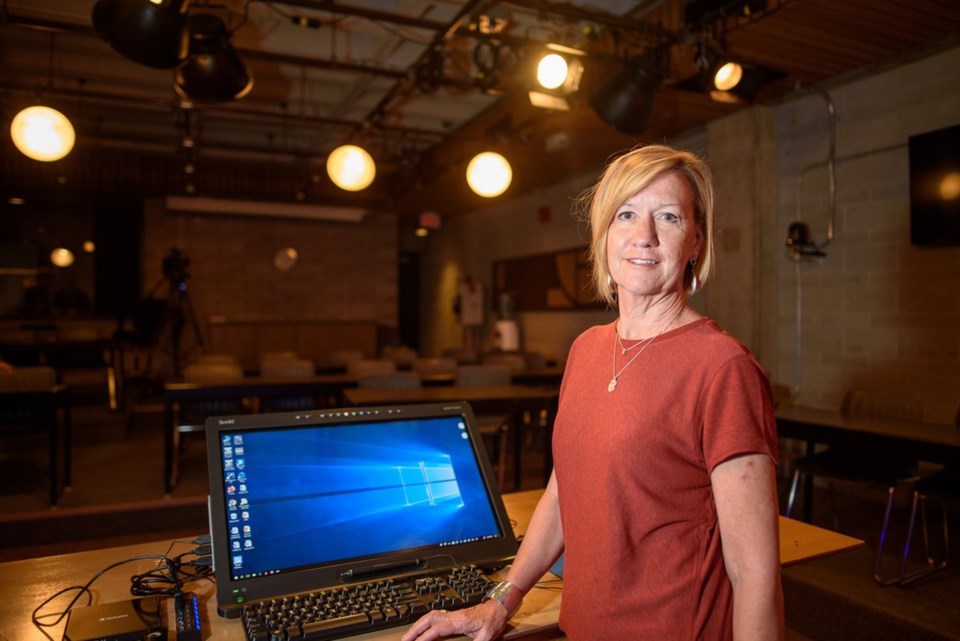Professors and students alike are hesitant about the prospect of more livestream lectures this fall, but one University of Winnipeg instructor has a positive pitch.
Sitting cross-legged on a red velvet armchair, in a studio equipped with three cameras, Jane Lothian could be mistaken for a talk show host. In fact, she’s an instructor in the U of W’s criminal justice department, who visited Wednesday what has become one of the busiest rooms on the downtown campus in recent months.
“It’s challenging to figure out how to learn in a different way than the traditional model, but I love teaching online; you can learn, and you can learn well — with the right strategies,” said Lothian, a longtime supporter of distance learning, who has worked at U of W since 1997.
Lothian recently finished teaching a spring course on interpersonal violence via pre-recorded video lectures, PowerPoint presentations with accompanying audio, live Zoom sessions and an online discussion board.
The province’s newest COVID-19 reopening phase will allow colleges and universities to have in-person instruction in September, as long as class sizes are limited to maintain physical distancing. Labs, studios, trades instruction and practicums are among the specific activities that can resume.
Despite the looser guidelines, schools continue to plan for widespread distance learning amid uncertainty of what the novel coronavirus presence will be in Manitoba when the 2020-21 academic year begins.
At the U of W, new and returning students can expect fall courses to look something like Lothian’s latest, as the school continues to invest in more cameras, video equipment and software to give instructors tools to provide alternate delivery. The Winnipeg-based school is still calculating how much it expects the pivot to distance learning will cost.
Plans for indefinite distance learning have prompted some prospective and current students to consider taking a gap year. E-learning critics suggest online learning can’t possibly compare to in-person instruction, citing everything from separation from an instructor and classmates to unequal access to broadband internet and devices.
Lothian, however, said she tackles the challenge of distance learning being solitary by encouraging students to discuss course content with their friends and family members; as for accessibility, she suggests pre-recorded content gives students flexibility.
Engaging informal conversations with students in Zoom boxes aside, she said the attendance in her latest online course is proof there are “misconceptions” about distance learning; participation mirrored the activity in her in-person courses.
Criminal justice student Theresa Mitchell can vouch for her instructor.
Mitchell said Wednesday she found success in the online course because she was able to take a pause from overwhelming and disturbing content with a click of a button from her home classroom. Mitchell, 60, added the online format allows her the opportunity to rewatch lectures. The model also alleviates stress for Mitchell’s partner, who transcribes her lecture notes because of her mobility challenges, and saves the duo the time it takes to prepare her to travel to class in a wheelchair.
Another student of Lothian’s, Jennifer Gilhooly, admits she doesn’t always attend in-person classes because she has to commute downtown from Oak Bluff. Online courses, she said, have proved more convenient and resulted in her ongoing, active participation.
Looking ahead to the fall, Gilhooly said her continued engagement will be “professor dependent.” She said she hopes more instructors take note of the video teaching model as they plan.




